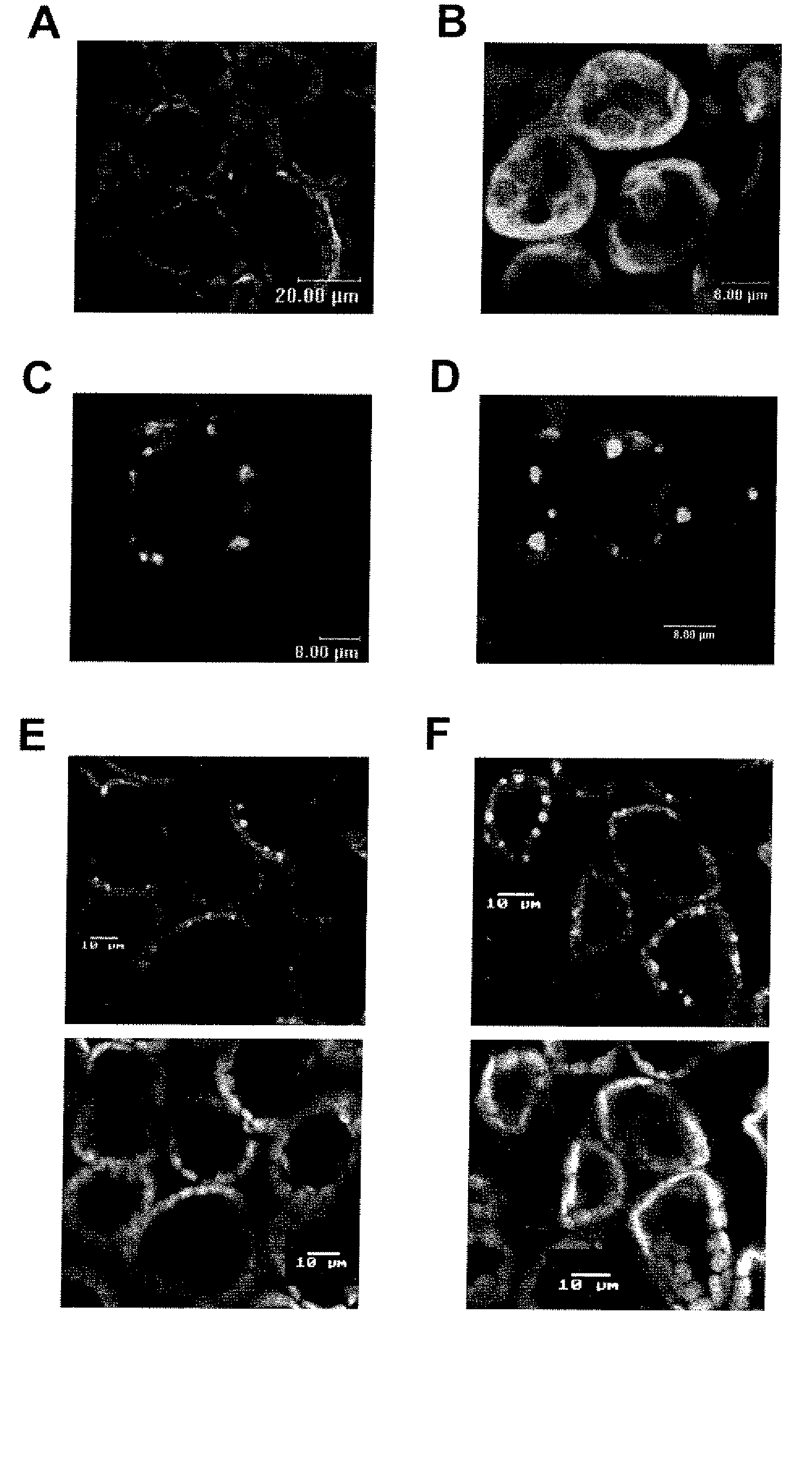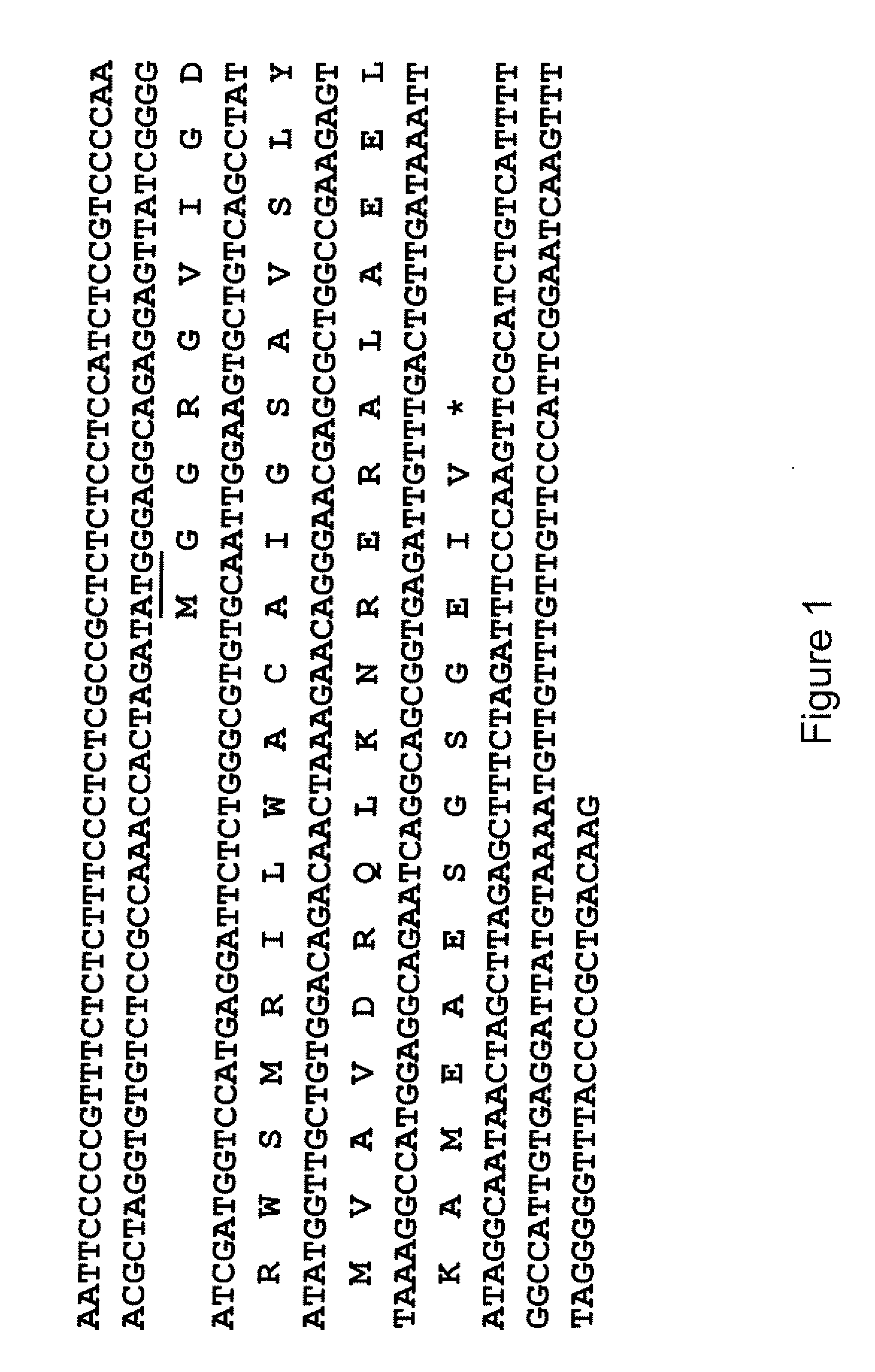Hrpn interactors and uses thereof
a technology of interactors and interactors, applied in the field of hrpninteractors, can solve the problems of inducing mitochondrial-dependent programmed cell death in plants, cell death, indirect disturbance of mitochondrial functions, etc., and achieves the effects of enhancing growth in response, reducing the risk of plant death, and increasing susceptibility in host plants
- Summary
- Abstract
- Description
- Claims
- Application Information
AI Technical Summary
Benefits of technology
Problems solved by technology
Method used
Image
Examples
example 1
Plant Material
[0109]Apple (Malus×domestica) cultivar Gala was used to generate a cDNA prey library for the yeast two-hybrid assay, and the HIPM gene was characterized from it.
[0110]Arabidopsis thaliana ecotype Columbia was used as the source of the AtHIPM gene and for transformation of the AtHIPM overexpressing construct. A T3 line, in which T-DNA was inserted in the 5′-UTR of the AtHIPM gene, was obtained from the Arabidopsis Stock Center (Colombus, Ohio, USA), and T4 seeds with homozygosity of the T-DNA-inserted locus, which was determined by PCR with two gene-specific primers, 5′-TTAGATATCCACATAACATGTGC-3′ (SEQ ID NO: 8) and 5′-TTCACAAACATAGCATGACAGG-3′ (SEQ ID NO: 9), and one primer from T-DNA, 5′-TGGTTCACGTAGTGGGCCATCG-3′ (SEQ ID NO: 10), were used for further experiments. Cultivar Galaxy was used for gene silencing. N. benthamiana was used for transient expression experiments.
[0111]The rice cultivars Nipponbare and Jefferson were used for cloning OsHIPM, and the cultivar Nippo...
example 2
[0112]E. amylovora strain Ea273 and its hrpN deletion mutant Ea273ΔhrpN were used to assay virulence of strains in immature pear fruits as described in Oh et al., “The Hrp Pathogenicity Island of Erwinia amylovora and the Identification of Three Novel Genes Required for Systemic Infection,”Mol. Plant Pathol. 6:125-38 (2005), which is hereby incorporated by reference in its entirety. In addition, Ea273 was used to determine whether expression of the HIPM gene is induced by E. amylovora in apple. In this experiment, 5 mM potassium phosphate (pH 6.5) was used as a buffer control.
example 3
Total RNA Isolation, RT-PCR, and Recombinant DNA Techniques
[0113]Total RNA was isolated from several parts of apple using the protocol described in Komjanc et al., “A Leucine-rich Repeat Receptor-like Protein Kinase (LRPKm1) Gene Is Induced in Malus×domestica by Venturia inaequalis Infection and Salicylic Acid Treatment,”Plant Mol. Biol. 40:945-57 (1999), which is hereby incorporated by reference in its entirety, and from several parts of Arabidopsis and leaves of rice using RNeasy™ kit (Qiagen, Hilden, Germany). Total RNA concentration was measured using the RiboGreen™ RNA quantitation reagent and kit (Molecular Probes, Eugene, Oreg., USA). RT-PCR was carried out as described in Wilson et al., “Concentration-dependent Patterning of the Xenopus Ectoderm by BMP4 and Its Signal Transducer Smad1,”Development 124:3177-84 (1997), which is hereby incorporated by reference in its entirety, with 0.5-2 μg (HIPM and AtHIPM) or 0.7 μg (OsHIPM) of total RNA. The HIPM nucleotide (SEQ ID NO: 1) a...
PUM
| Property | Measurement | Unit |
|---|---|---|
| pH | aaaaa | aaaaa |
| length | aaaaa | aaaaa |
| nucleic acid | aaaaa | aaaaa |
Abstract
Description
Claims
Application Information
 Login to View More
Login to View More - R&D
- Intellectual Property
- Life Sciences
- Materials
- Tech Scout
- Unparalleled Data Quality
- Higher Quality Content
- 60% Fewer Hallucinations
Browse by: Latest US Patents, China's latest patents, Technical Efficacy Thesaurus, Application Domain, Technology Topic, Popular Technical Reports.
© 2025 PatSnap. All rights reserved.Legal|Privacy policy|Modern Slavery Act Transparency Statement|Sitemap|About US| Contact US: help@patsnap.com



